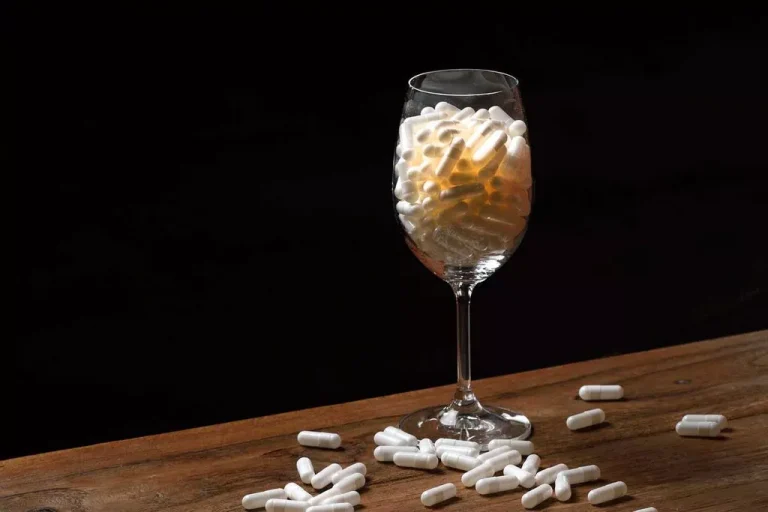
Behavioral treatment can also help with any co-occurring mental illnesses contributing to the AUD. If a person believes that they are misusing alcohol, they should consider seeking medical help. Early intervention can help prevent some of the negative consequences of drinking. Millions of readers rely on HelpGuide.org for free, evidence-based resources to understand and navigate mental health challenges. Please donate today to help us save, support, and change lives. Do you have to drink a lot more than you used to in order to get buzzed or to feel relaxed?
Can alcohol intolerance develop suddenly?
The desire to drink is so strong that the mind finds many ways to rationalize drinking, even when the consequences are obvious. By keeping you from looking honestly at your behavior and its negative effects, denial also exacerbates alcohol-related https://ecosoberhouse.com/ problems with work, finances, and relationships. Substance abuse experts make a distinction between alcohol abuse and alcoholism (also called alcohol dependence). Unlike alcoholics, alcohol abusers have some ability to set limits on their drinking.
Spending lots of time drinking or dealing with its effects
- Alcohol use disorder replaced the designations that had previously been separately defined as “alcohol abuse” and “alcohol dependence.”
- Alcoholism affects everyone around you—especially the people closest to you.
- If you think you or someone you care about has alcohol use disorder, here are some next steps you can take.
- But you will be in a healthier position to finally address them and seek the help you need.
The “Diagnostic and Statistical Manual of Mental Disorders, Fifth Edition,” (DSM-5), published in 2013, has created a list of 11 symptoms that indicate an alcohol use disorder. Your doctor can see how well your liver is functioning by testing the levels of aspartate aminotransferase (AST) and alanineaminotransferase (ALT). Eighty percent of patients with alcoholic liver disease have elevated liver functions and anAST that is double their ALT level. Elevated levels of gamma-glutamyltransferase (GGT) can also indicate excessive alcoholconsumption. Heavy drinking in and of itself doesn’t make someone an alcoholic.
Binge drinking and alcohol poisoning
- If you’re a binge drinker or you drink every day, the risks of developing alcoholism are greater.
- In these cases, treatment is usually most effective when it addresses both the traumatic situation and the symptoms of PTSD.
- People who are addicted to alcohol may also show a deteriorating physical appearance from poor nutrition and personal neglect.
- Online and community-based recovery groups can also be helpful during alcohol withdrawal and addiction treatment.
Some healthcare professionals may use an older tool to screen for alcohol use disorder called the CAGE Questionnaire. One sign of AUD is engaging in certain behaviors during or after drinking that may have harmful effects. For example, a person may engage in activities that risk unwanted or harmful consequences while drinking alcohol. About 50% of people with AUD develop withdrawal symptoms after they stop drinking.

SSRIs may help manage PTSD symptoms such as sadness, worry, anger, and feeling emotionally numb. Health care providers may prescribe SSRIs and other medications along with psychotherapy. Some medications may help treat specific PTSD symptoms, such as sleep problems and nightmares. Clinical trials are research studies that look at new ways to prevent, detect, or treat diseases and conditions. The goal of clinical trials is to determine if a new test or treatment works and is safe. Updates about mental health topics, including NIMH news, upcoming events, mental disorders, funding opportunities, and research.

Department of Health and Human Services (HHS) that leads public health efforts to advance the behavioral health of the nation. The 2023 NSDUH report includes selected estimates by race, ethnicity and age group. The report is accompanied by two infographics offering visually packaged highlight data how to recognize signs and symptoms of alcoholism and alcohol abuse as well as visual data by race and ethnicity. Research has found several behavioral therapies that have promise for treating individuals with co-occurring substance use and mental disorders. Health care providers may recommend behavioral therapies alone or in combination with medications.

- Of the five subtypes, they rate highest for other psychiatric disorders and abuse of other substances.
- A heavy drinking binge may even cause a life-threatening coma or death.
- There are various types of alcoholics, and not everyone with an alcohol problem fits a stereotype.
- Healthcare professionals can help you get medical and psychological help to deal with withdrawal symptoms and underlying issues that may be influencing you to use alcohol.
- Symptoms can be moderate to severe, with addiction being the most severe form of SUD.
- However, there are some factors that may make a person more likely to develop it.
Many drinking problems start when people use alcohol to self-soothe and relieve stress (otherwise known as self-medicating). Getting drunk after every stressful day, for example, or reaching for a bottle every time you have an argument with your spouse or boss. Individuals in the intermediate familial subtype are, on average, age 38 and are usually employed. About 50% of these individuals are from families with multigenerational alcoholism, and almost all have experienced clinical depression. The Healthline FindCare tool can provide options in your area if you need help finding a mental health specialist. Therapy is useful to help teach someone how to manage the stress of recovery and the skills needed to prevent a relapse.








